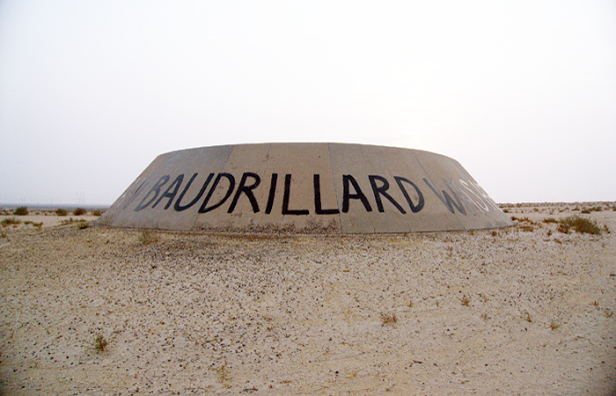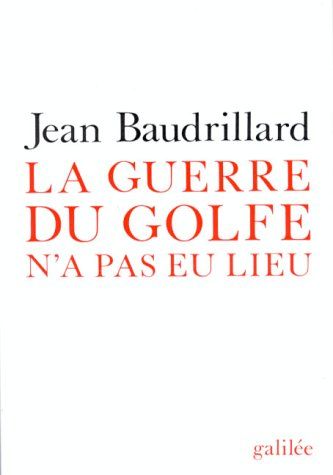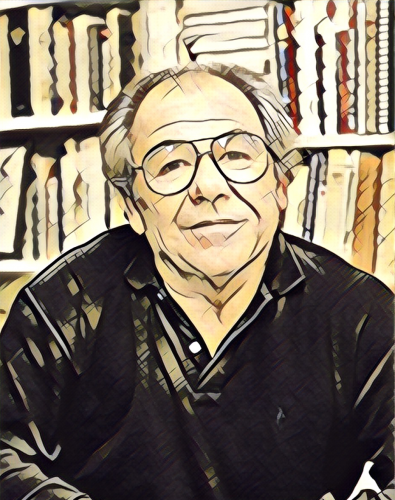
哲學博士生,專長為意識哲學。有鑒追求靈性生活的香港人愈來愈多,惜坊間謬說流行,學院又鮮予重視,誠覺一憾。遂立志融會靈性與知性,助人探索精神世界之各處幽微。
Real is dead

[Shuixiang Inscription] What is the real thing? Perhaps Busia couldn't answer either. Because the world is living in an era of indistinguishable truth from falsehood, and his deity is no exception. Or at least after publishing the simulacra, he gradually gave up the pursuit of truth.
He is probably better known for his remarks on how he criticizes the contemporary media. When the United States invaded Iraq, he repeatedly said that the Persian Gulf War never happened, and all the pictures displayed on the TV screen were nothing more than simulacra. Of course, he wasn't trying to come up with some wild conspiracy theories that the United States never landed on the moon. He just questioned how much media processing and distortion of the turmoil that really took place on the other side of the world was finally broadcast to American audiences through TV screens. In the end, will the well-known news be just a group of suspicious images that are separated from the truth and spread by themselves? His analysis also applies to advertising. The media constantly instills images of various commodities or ideologies into the public through advertisements, so that the public gradually confuses images and reality, and regards the new order constructed by symbols as natural. That's why he quoted Marshall McLuhan's famous saying "Medium is message" several times to explain this real disappearance.

It seems easier to explain the effect of simulacrum through the use of media. For one thing, the characteristics of the media are indeed constantly producing overwhelming images. Second, the images woven by the media seem to allow for a more obvious distinction between true and false. For example, the phenomenon of "fake news" that has been discussed frequently in recent years, the reason why you can judge some news to be false is that you first believe that there are various real events happening independently of news reports, and you generally know "true". How should the news" report these independent events, as if in the realm of the media it is still possible to clearly distinguish between true and false images.

actually not. Busia believed that the media brought information to the public, but also took away meaning. (Nous sommes dans un univers où il ya de plus en plus d'information, et de moins en moins de sens.) The overwhelming amount of information has long since lost its significance in helping people distinguish the true from the false, and is merely a simulacrum. Even creating the illusion that the true and the false are still diametrically divided is the skill of the mimetics, which Busia jokingly calls the “perfect crime” of the mimetics, more like the real than the real. And his analysis is not limited to the media. He wants to point out that mimetics have already penetrated into the whole body of the world and are everywhere, and even common habits such as massage, jogging, practicing yoga, and purchasing "natural" products are all part of Mimic. Are your ordinary life and mine also a replica?
Compared with his earlier works, Mimics and Mimics is closer to a collection of essays, with a loose structure and a detached subject matter. He said that American life was more illusory than Disneyland, that the Watergate case was not a mere scandal, that the nuclear war was fake, and that the golden age of science fiction was over, and that all analysis could be traced back to a far-fetched fantasy. elephant. As for the mimetics and simulacra, which should be the subject of the whole book, the explanation is not detailed, leaving readers unsure.
Nous sommes à la fin de la production. Cette forme coïncide en Occident avec l'énonciation de la loi marchande de la valeur, c'est-à-dire avec le règne de l'économie politique. (Baudrillard)
I think his previous book on simulacra, L'échange symbolique et la mort (Symbolic Exchange and Death), is a better place to start. This book clearly explains the background in which he published his simulacra, that is, when he believes that the political economy framework on which the traditional left has relied is no longer sufficient to understand the current situation. People's lives are no longer determined by production conditions, but by ubiquitous symbol systems, living according to models or codes of unknown origin. Anyone's thoughts and behaviors are reduced to commodities that can be manipulated. For example, the reason why Internet celebrities make money from advertisers is that the attention of Internet users has become a commodity that Internet celebrities can hold and sell. Symbols constantly reproduce themselves and determine the thoughts and behaviors of the world, but the world is unaware that the order dominated by symbols is real. It is called "hyperreal", that is, more real than real, so that the map eventually swallows and replaces the empire, and the world does not take it as a surprise.
Busia is known as the high priest of postmodernism, after he declares that modern views, including those of the traditional left, have become anachronistic and must be replaced by new ones that are true and uprooted. The word "simulation" is clever. If you look up the dictionary, the word "simulacrum" can have two interpretations. One refers to pretending to be real, and the other refers to the computer inventing various models to help people estimate possible scenarios. His ideas not only inherit the philosophical tradition of theories about ontology and replicas, but also echo the new concepts and phenomena derived from technological breakthroughs in this world.
Quand Dieu est mort, il y avait encore Nietzsche pour le dire — grand nihiliste devant l'Eternei et le cadavre de l'Eternel. Mais devant la transparence simulée de toutes choses, devant le simulacre d'accomplissement matérialiste ou idéaliste du monde dans l 'hyperréalité (Dieu n'est pas mort, il est devenu hyperréel), il n'y a plus de Dieu théorique et critique pour reconnaître les siens. (Baudrillard)
In "Sur le nihilisme" (Sur le nihilisme), the last chapter of "Simulations and Simulacra", Bouzier said that when God died, there was still Nietzsche (Friedrich Nietzsche) to announce the mourning to the world. But in the face of the disappearance of reality and the reduction of all things into imitations, there will no longer be a prophet like Nietzsche reminding the world that God is also reduced to a superreal image. Isn't Busia himself the sorcerer who announced the arrival of postmodernity? At a symposium in New York, he was asked, "Who are you?" He replied, "I don't know what I am either. I am an imitation of myself." (What I am, I don 't know. I am the simulacrum of myself.) (to be continued)

Like my work?
Don't forget to support or like, so I know you are with me..
Comment…